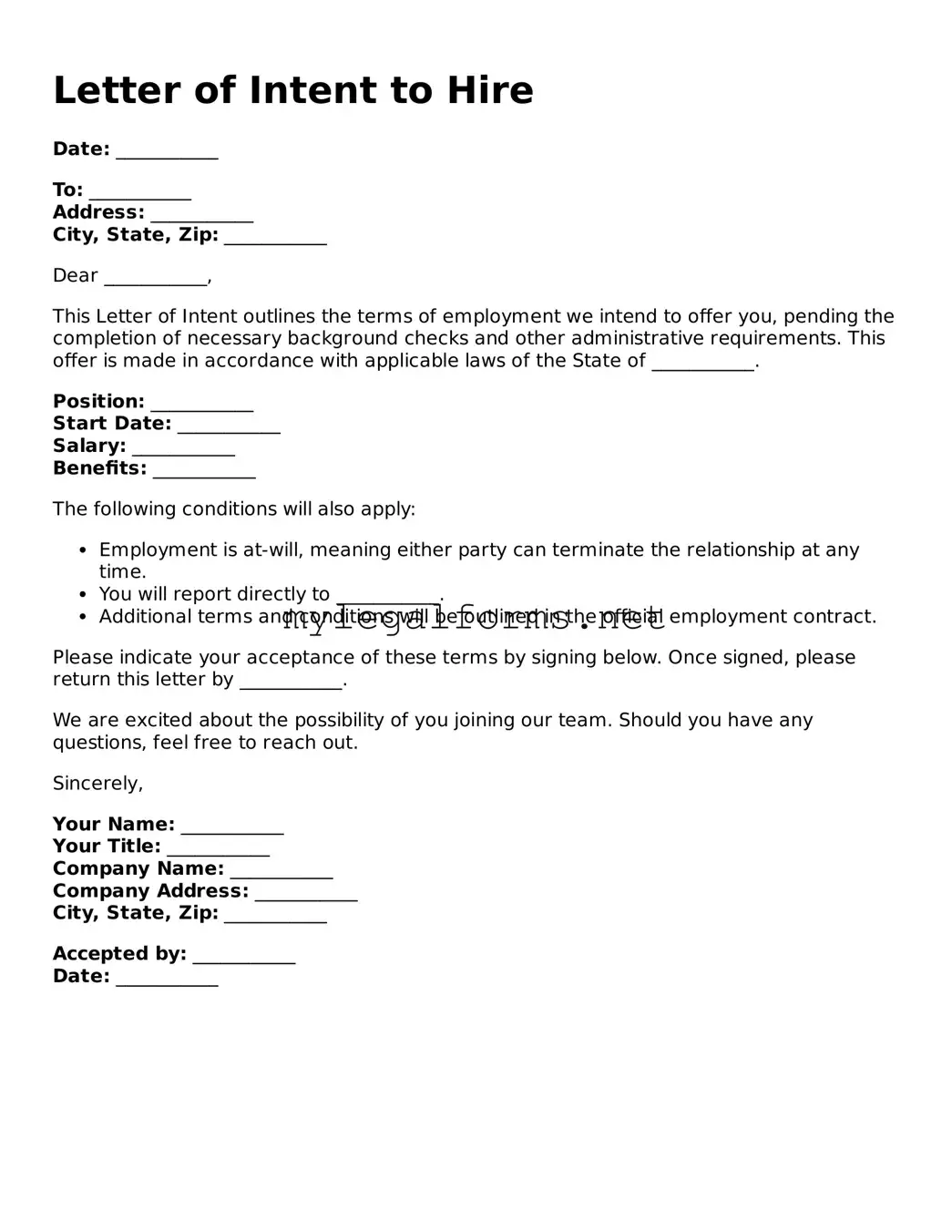Letter of Intent to Hire
Date: ___________
To: ___________
Address: ___________
City, State, Zip: ___________
Dear ___________,
This Letter of Intent outlines the terms of employment we intend to offer you, pending the completion of necessary background checks and other administrative requirements. This offer is made in accordance with applicable laws of the State of ___________.
Position: ___________
Start Date: ___________
Salary: ___________
Benefits: ___________
The following conditions will also apply:
- Employment is at-will, meaning either party can terminate the relationship at any time.
- You will report directly to ___________.
- Additional terms and conditions will be outlined in the official employment contract.
Please indicate your acceptance of these terms by signing below. Once signed, please return this letter by ___________.
We are excited about the possibility of you joining our team. Should you have any questions, feel free to reach out.
Sincerely,
Your Name: ___________
Your Title: ___________
Company Name: ___________
Company Address: ___________
City, State, Zip: ___________
Accepted by: ___________
Date: ___________
